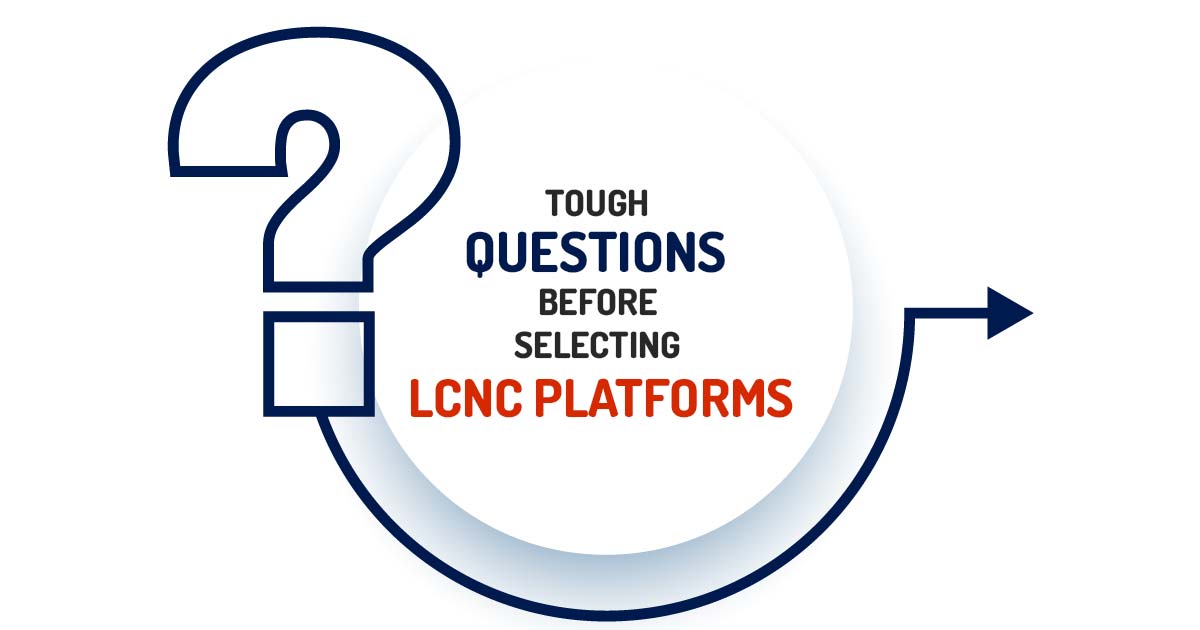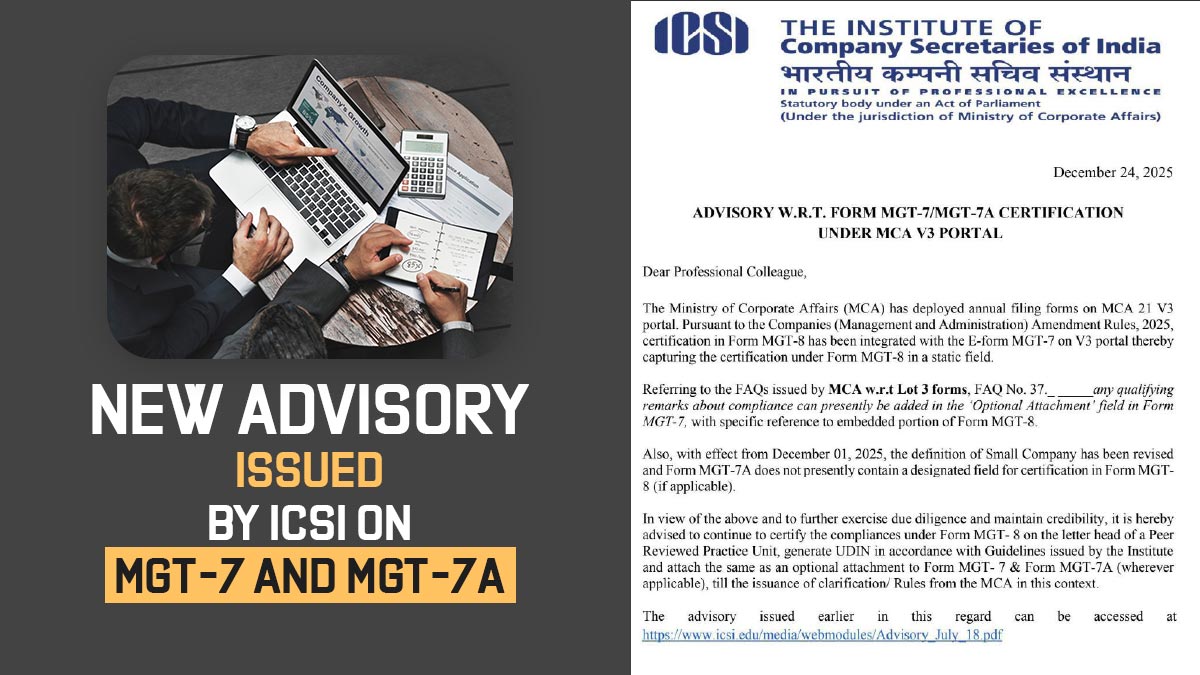
The companies are facing pressure to produce new products and services at a lower cost. They laid on the new generation software and services to get there. Low-code-no-code platforms are popular options with respect to enterprise-grade applications for companies who want to expand. As the infrastructure and building blocks are pre-built in LCNC (Low-code-no-code) platform, they increase the speed of the application development process.
With no coding could you make complex enterprise-level applications?
This question is that the CIOs should ask low-code no-code vendors.
The same is the confusion with the LCNC (low-code-no-code) platforms. Several low-code-no-code platforms only provide the normal and simple app development capability. When you require enterprise-level application support, does the vendor provide it to you? Or does it need some more coding?
There are some advanced low-code-no-code platforms that have built-in advanced features in their platform. Through these characteristics, business users could now make tough enterprise-grade applications without writing any code. You must ensure that your choice has a tick with respect to the same criterion.
Will the business users have the potential to use the platform to make the applications? Or do I require professional developers?
A no-code platform permits business users to build applications without coding while the LCNC low-code-no-code platforms need professional developers to make the applications. It is crucial to know the extent to which business users are unable to use the platform to meet their needs.
Can the platform be customized?
You require to find out whether the applicants made on the platform are stand-alone or require a subscription to run. You need to make an application that can run alone without relying on the tool, to make that would work even when you move away from the low-code-no-code platform.
It is obvious to question the levels of customizability that the apps made on the platform would provide.
- Will you be able to change, edit, add, or remove stages in the workflow?
- Will you be able to add or terminate fields easily?
- How fast can you do these customizations and deploy them for use?
What is the platform’s integration capability?
The question would provide you with an understanding that you could use open APIs to integrate seamlessly when you integrate the applications that you made on the platform with the other applications on the platform or the third-party systems. In day end, you do not want another software working in a silo.
Read Also: 14 Latest Myths and Reality on Low-Code No-Code Platforms
How safe is this low-code-no-code platform?
CIOs should ask the LCNC low-code no-code platform vendors. Much more discussion was there about the application security in the low code and no code app development. However, the best ones insert security controls at every stage. Thus, make sure that you could ask the vendor to go into this information. Question about user authentication, secure data, transmission, content privacy, user access control, encryption of data, and anti-theft measures. See if their security controls are certified by ISO 27001 and SOC 2 standards.
It is effective to note that with no-code tools the probability of any additional security vulnerabilities gets lower because the users shall not write any custom code, and the ready-to-use building blocks are already tested for any security threats. While companies are required to be cautious when using low-code tools to prevent the security vulnerabilities introduced via handwritten code.
What is the process of deployment?
How are the applications deployed to production? Is there any testing environment?
Is there any downtime? What are the options to revert to the former version of the applications, when you want to do that?
What is the necessity of customer support service?
In a fixed hour duration, the customer support service should be effective over the phone.
Does there any availability for email and chat? Also, question SLAs.
The type of customer support differs from one platform to the other. You must be sure to lock in the vendors who promise what you want.
Does the vendor provide analytics with the solution?
- What sort of analytics could you expect and how simple is the data to learn?
- What sort of reports shall you be able to make?
- Will you be able to make the reports on your own?
- Will you have the potential to make the dashboards with these reports?
- Will reports feed drill-down functionality?
- Do you able to make the PDF reports?
What do you mean by pricing?
Is it simple to learn and reveal how much your company shall spend within a duration of time? Or it is confusing with no clear indication of how much you might finish spending?
- What is the method to compare to the competition?
- Do you be able to switch the plans at any period?
- Are there any discounts when your usage rises?
- Is there any lock-in duration?
- What is the refund scheme?
What talents are required by the employees of my company to use the platform
The business case for the low-code or no-code software boils down to the duration and money savings. They furnished your application in much less time, through the use of resources. They lessen the requirement for coding knowledge in the development procedure.
But, these advantages shall be applicable when the platform has a low learning curve and does not need any other technical skills.
Hence the question: What talent is required to use the platform? How much time it shall take to wake up and run? What technical skills does require for developers or citizen developers? These are all essential questions to acknowledge when computing the ROI of the software.
Are there enough pre-existing templates provided by the platform?
You should learn about this to automate the business process. The concern is the ready-made templates and components get a rise in productivity, supply flexibility, and a comfortable development procedure.
What is the platform’s ability to create, share, and consume APIs like? Can the platform be integrated?
There are some chances that one does not want to make applications that function independently of your current system. Integration is a crucial part of any low-code/no-code tool.
The same question would provide you with an understanding of whether you could use open APIs to integrate uninterrupted and when you could integrate the applications then you make on the platform with the additional applications on the platform or the third-party systems. Lastly, you do not want additional software work in a silo.
Could I use the other products in a team with the platform? Are there any restrictions on the kind of applications that I make?
The major criterion when choosing an LCNC platform is its flexibility and openness, thus it is equally important to learn what restrictions the platform poses. You must not get locked in or dependent on the platform. A lock-in moreover comprises various aspects from the making of standalone applications, data access, and the control to open source or generated property code. Investigating the platform you are required to approach the answer to the same question from various methods.
Are there any additional costs in the licensing structure? What is the cost?
One of the major aspects of choosing the LCNC (Low-code-no-code) platform is cost. There is no standard, one size fits all the licensing structure, and the other price can rise. For the specific thing you know what you pay for, you are required to learn the kind of charge by the vendors like the fee for the end-user seats, the developer seats, run-time, distribution, and maintenance fee. Some of the platforms are used to furnish the standard email support along with the cost.
Does the vendor provide analytics with the solution?
- What sort of analytics could you expect and how simple is the data to learn?
- What sort of reports would you enable to make?
- Will you enable me to make the reports on my own?
- Will you be able to build the dashboards through these reports?
- Will the reports be used to furnish the drill-down functionality?
- Would you have the skills to make PDF reports?
What are the steps involved with deployment?
- How are the applications deployed to production? Is there any testing environment?
- Is there any downtime?
- What are the choices to revert to the former version of the applications, when you want to do that?
On what server does the platform reside?
- Where shall your data get stored?
- Does the hosting provider pose precise security controls? Does the hosting service ISO 27001 and SOC 2 compliant?
- How does my private data manage? Would I be able to access the same, edit it, delete it, or move it at any period of time?
What method is used by the user to access control work?
How do you restrict access to apps, reports, dashboards, and other features based on user privileges? If necessary, can dual authentication be enabled?
Could we limit access to the application via specific IPs?
Closure
When opting from a low-code/no-code vendor, the same is essential for:
- Give attention to the way it has proven itself and if the same has made a network of partners and integrators.
- Comply with the latest standards in the industry. The reports from Gartner and Forrester can also be an irreplaceable help.
- See cutting-edge reports, see authoritative feedback, and take the benefits of the trial duration of work with the platform could assist. When choosing a precise low code development platform, acknowledge the requirements of the business. The function which is ideal for one company might not work in another.








